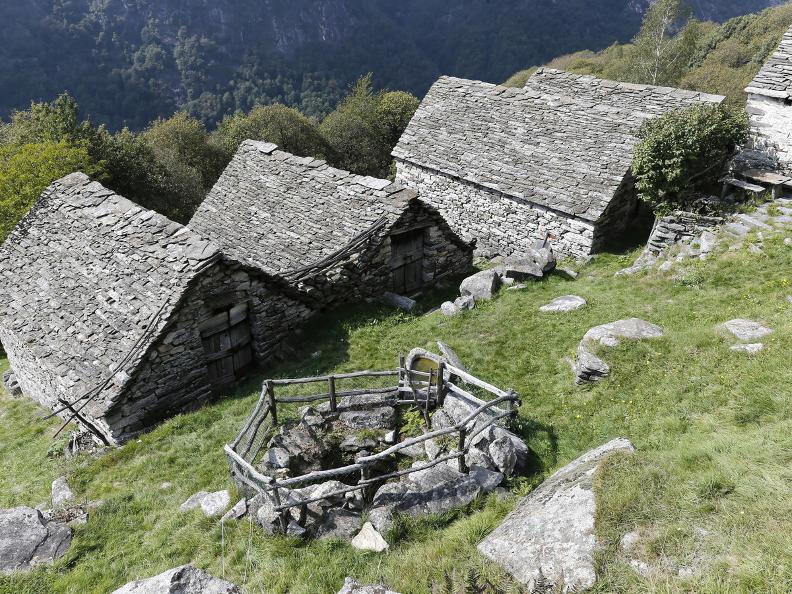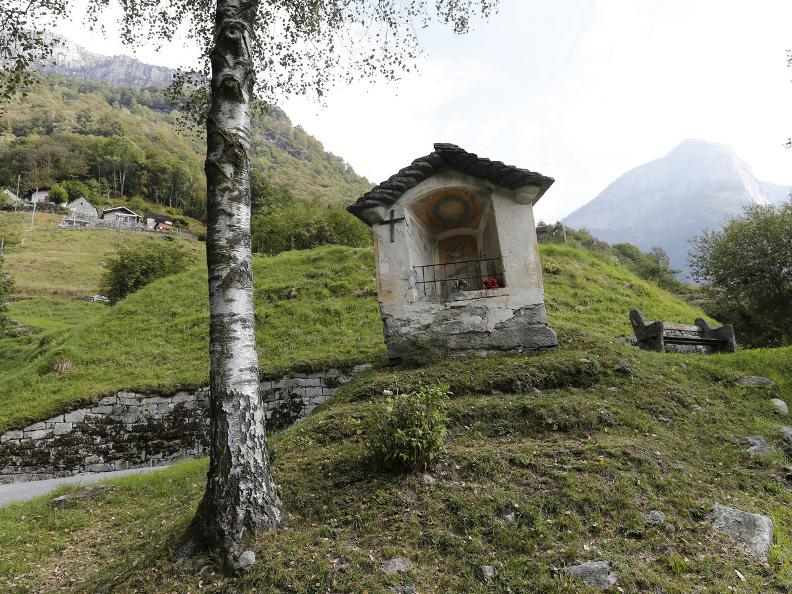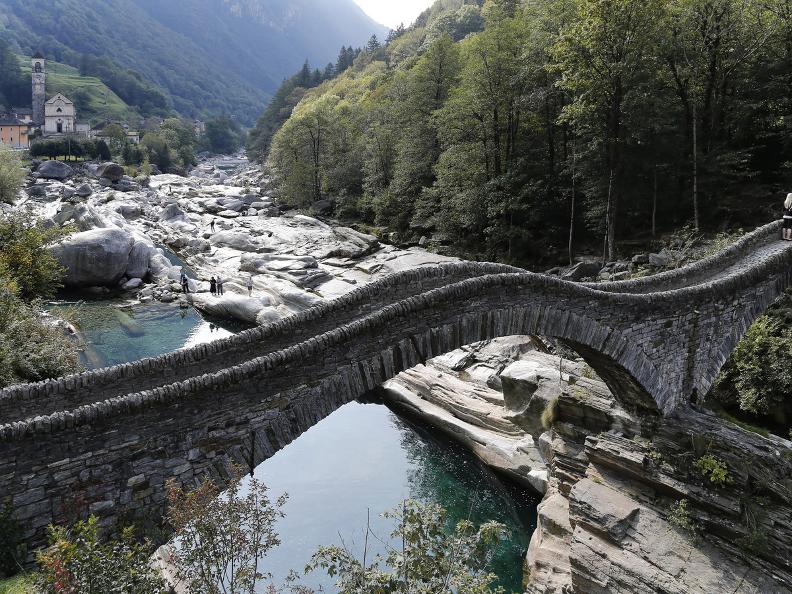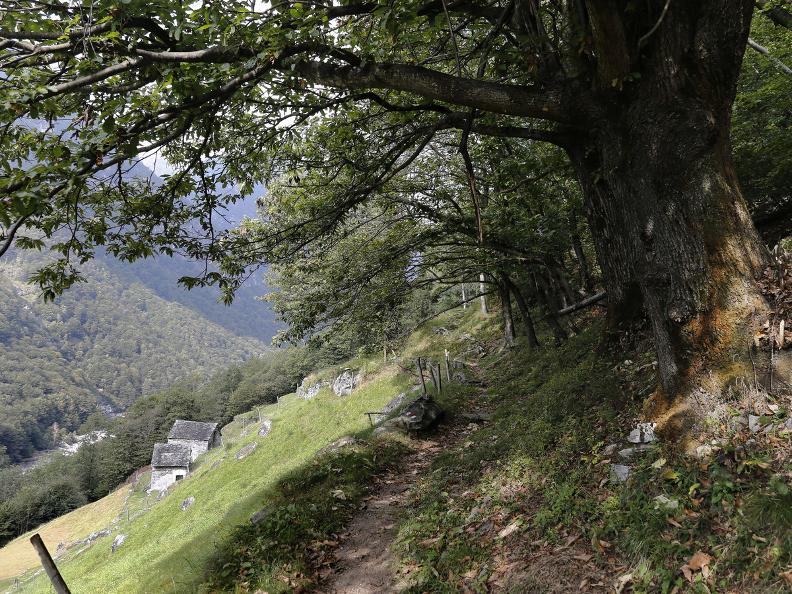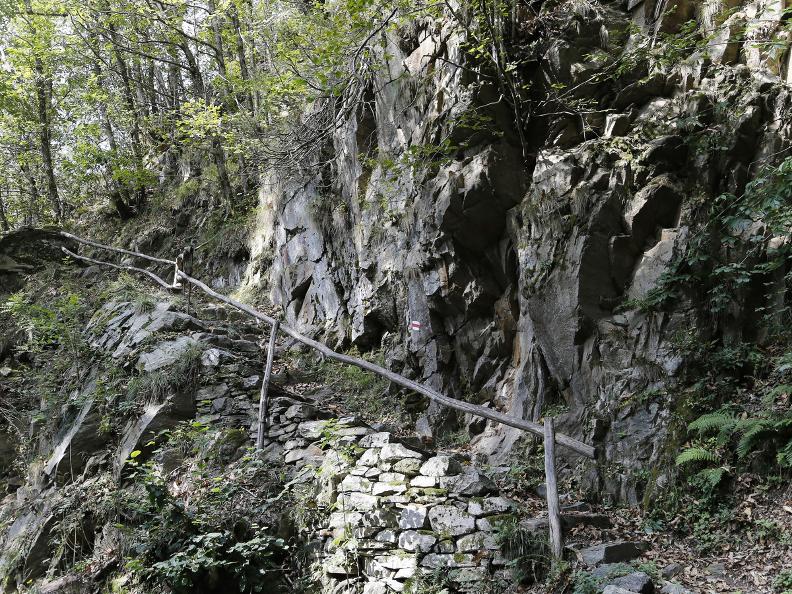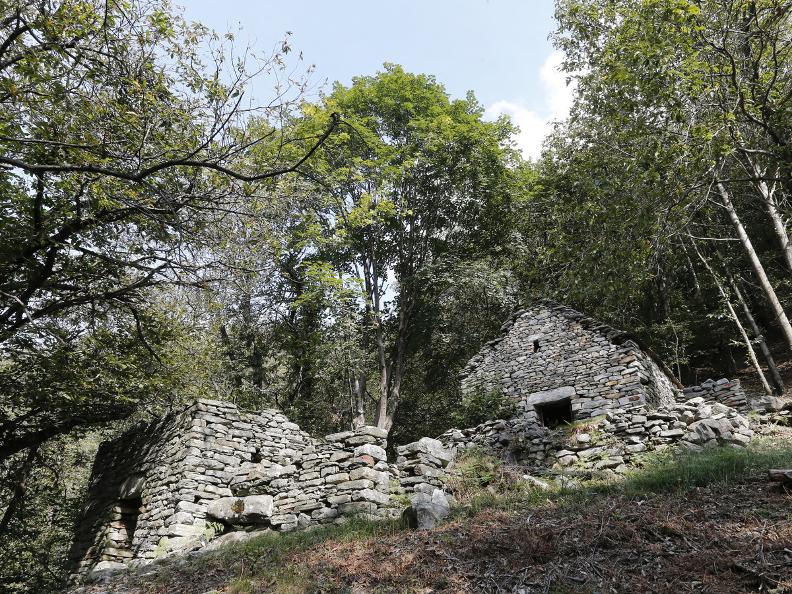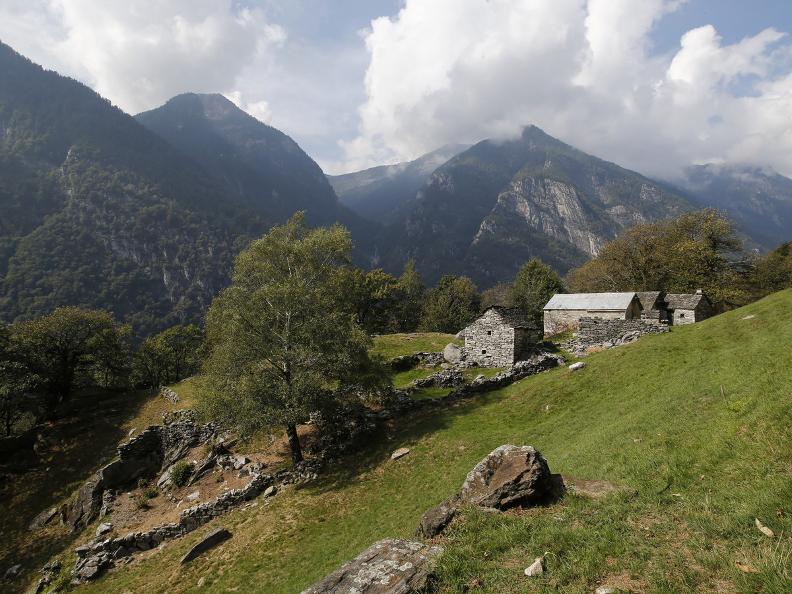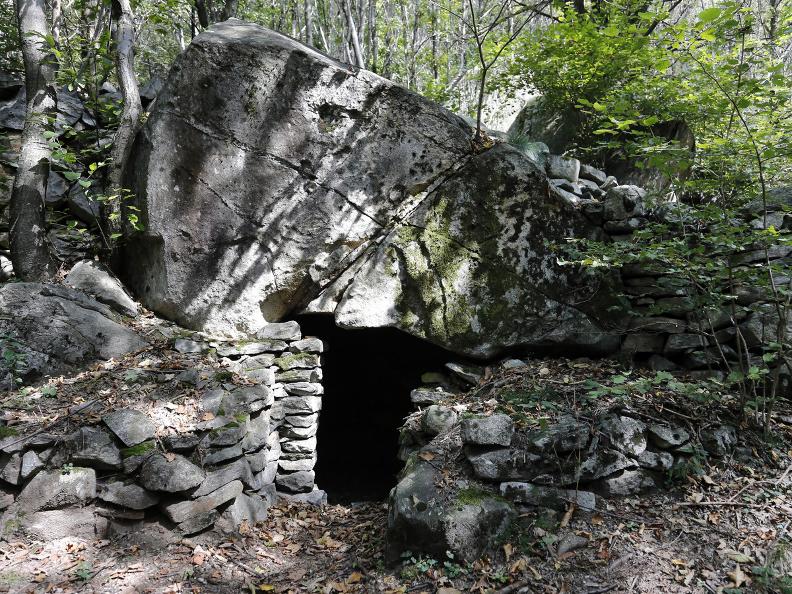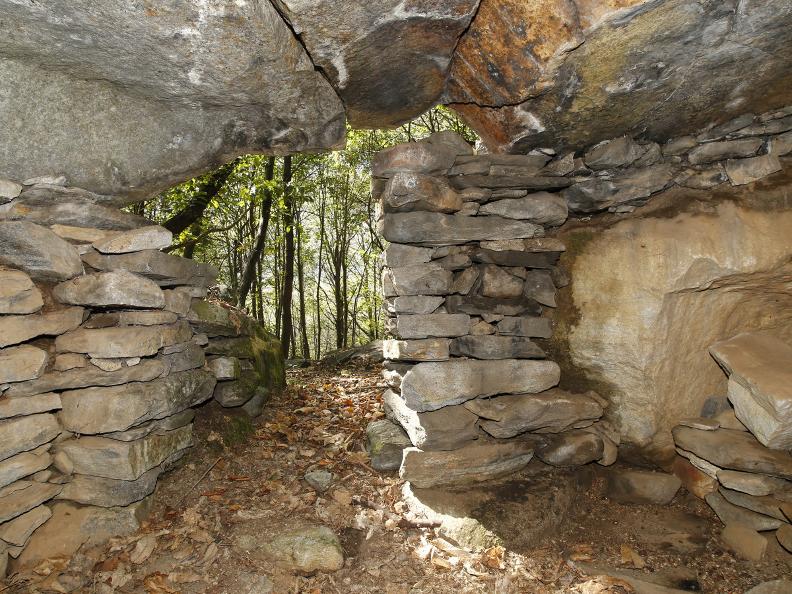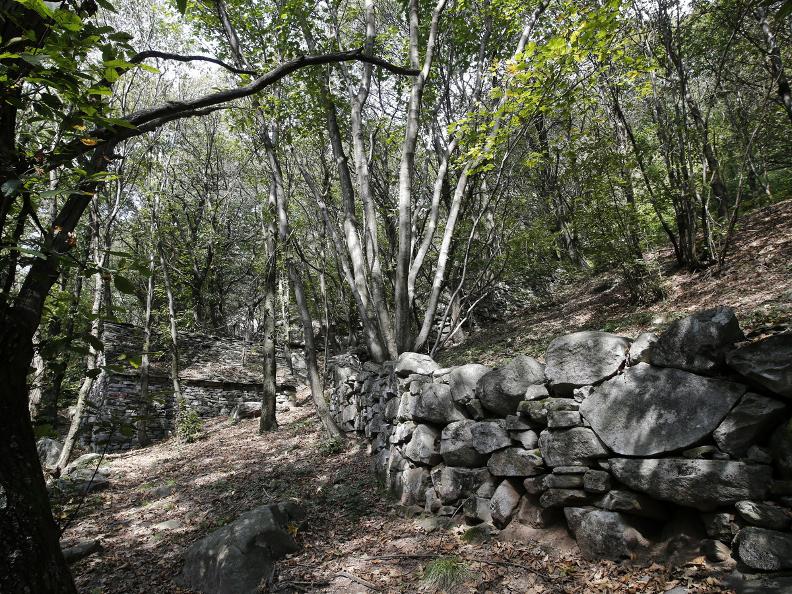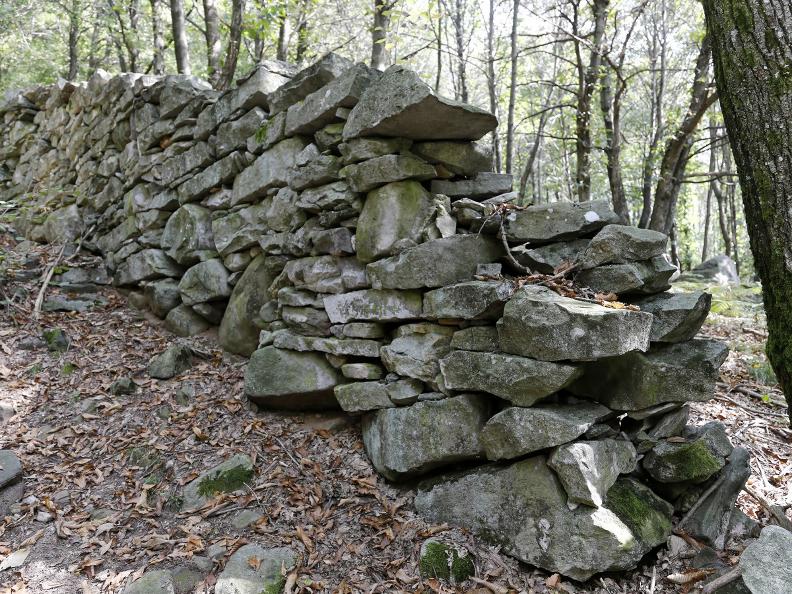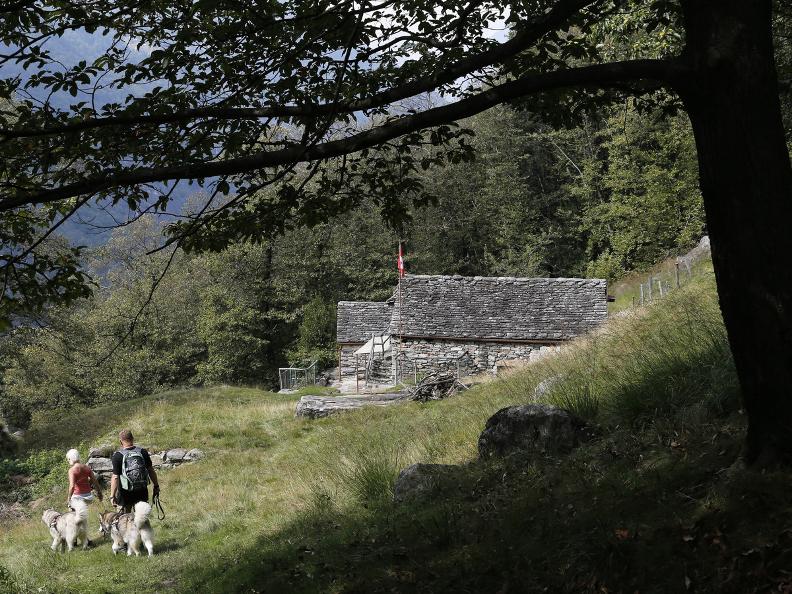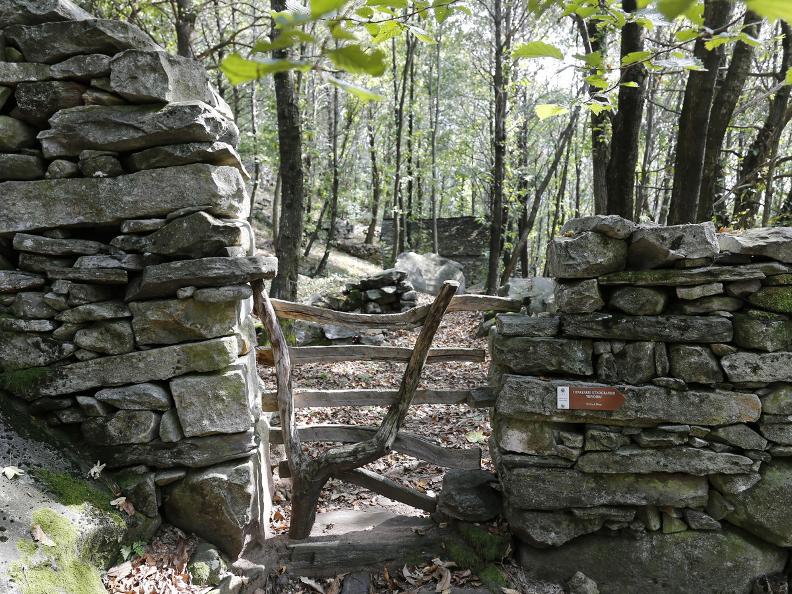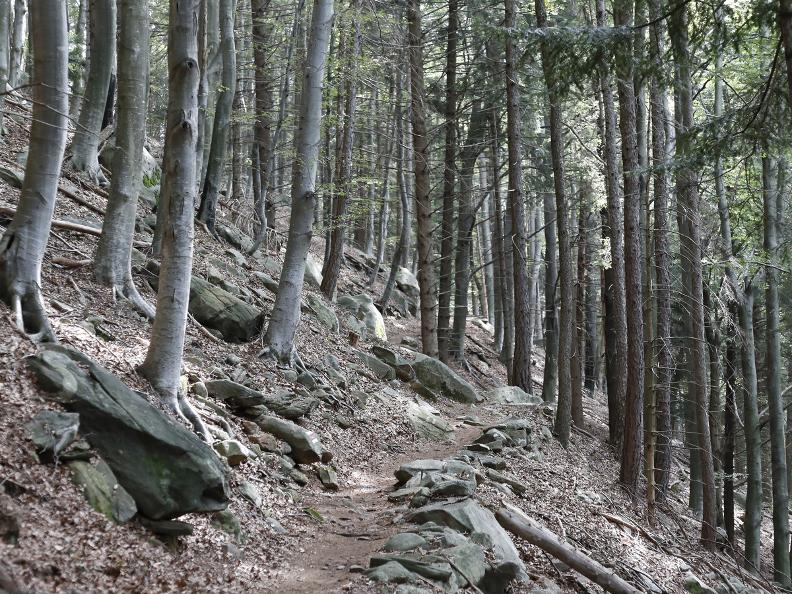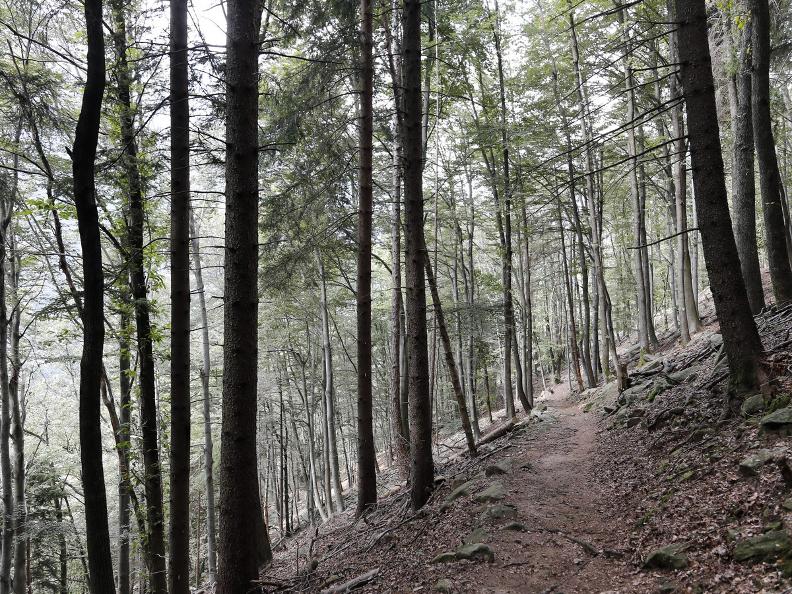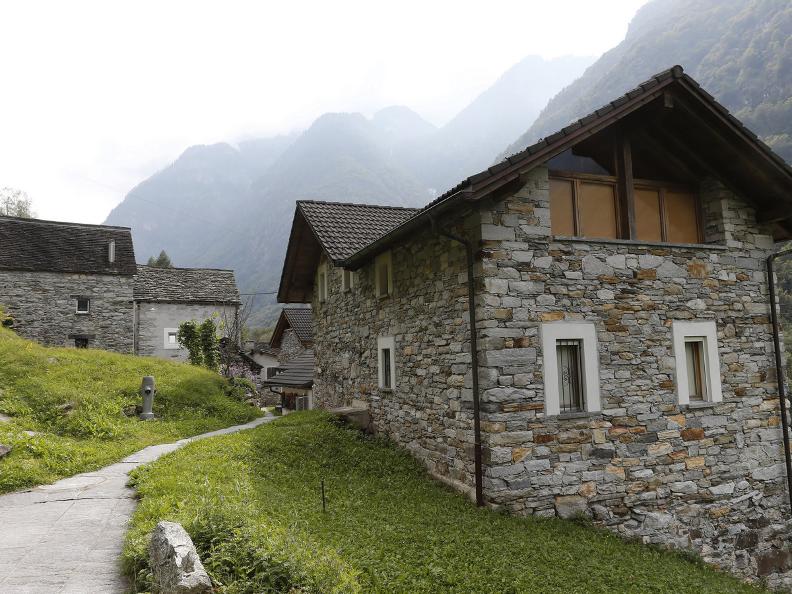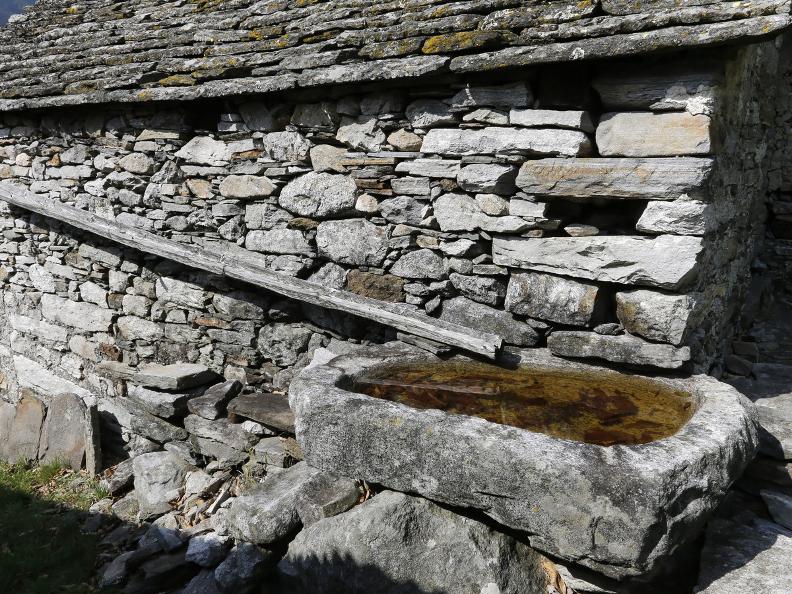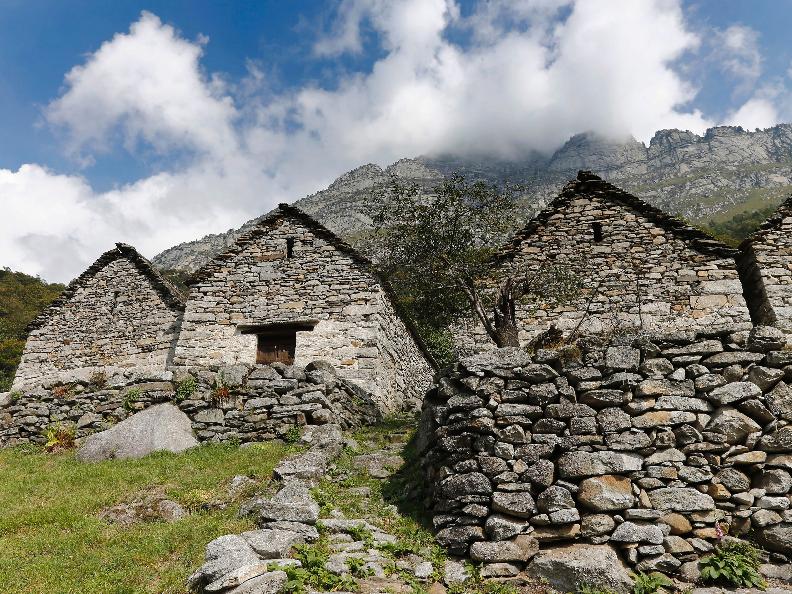Thanks to the ethnographic Revöira itinerary, you can hike over one of the many ‘transhumance’ routes. You can travel back to a time when men and animals used to move their home from season to season and struggled to find water. You’ll discover their ancient water system and the monolithic tanks where “golden blue” was collected. Finally, you’ll be amazed by the emerald green waters of the Verzasca river.
One generally associates Lavertezzo with the image of the stone-bridge arched over the waters of Verzasca river. Its hard to imagine that part of the valley once suffered a dry spell. Yet, the center of this itinerary is an exceptional water supply plant: built on the valleys left mountainside, on Mount Revöira and Ca d Dént, it proved to be the solution to the chronic drought afflicting the southwestern flank of mountain Föpia (2106m), above Lavertezzo.
Geology
The western flank of Föpia is marked by a general lack of water caused by a variety of factors beginning with the morphological attributes of the entire cliff, which are similar to a huge rocky triangle slanted without any concave surfaces allowing superficial water to gather. Rainwater and waters resulting from melted snow and ice thus flow quickly and widespread down the impermeable crystalline substratum, which characterizes the superior part of Föpia. The waters then infiltrate the detrital stratum at the bottom of the rocky faces at an altitude of approximately 1350 meters. This impressive mass of detritus occupies most of the slope, created by the progressive dismantling of the relief. Its constituent materials are a heterogeneous mixture of boulder fragments, accumulated landslide detritus, and glacial deposits, forming a permeable unit allowing the water to freely circulate inside it and resurface much later, below the valley (Aquino and Sambugaro springs). Locally, however, particular conditions exist, allowing the rise of subterranean waters to levels just below the surface that are reachable through small wells like those in al Mátro, ar Cistèrna and Mött del Cisternígn in Revöira.
Ethnographic Trail
The trail begins near the parish church of Lavertezzo and follows one of the many paths of transhumance. Going up the nucleus of Sambugaro, it leads to the maggenghi (or mounts) of Revöira and Ca d Dént. Here, on these maggenghi, in the past men and livestock spent their spring before ascending the mountain pastures of Orgnana, Cansgéll or those of Agro and Pincascia valleys during the summer. They would return in autumn, before descending the valley for the winter season. Once in Revöira, the path first explores its nuclei, then moves towards Ca d Dént, revealing on the way some elements of the ancient water system. One may notice in particular wells and several monolithic basins in which the scarce water was collected. Finally, the path descends towards Motta - precinct of Brione Verzasca – where it meets the road open to vehicles on the valley bottom and connects to the “Sentierone” on the right river bank.
1 Sambugaro
After the churchyard of the parish church of Santa Maria degli Angeli with a late-baroque façade, one continues on the cobblestone path leading to Sambugaro. Erected on one of the few flat and inhabited terraces in the past, most of the nucleus today has been renovated. It is possible to catch a glimpse of old houses with large lodges and religious frescos adorning their walls. Nine chapels from the XVII-XVIII century (a number that is usually only found at the valley bottom) between Lavertezzo and Revöira serve as testimony to the profound faith of the local people. The chapel’s iconography typically illustrates the Madonna, a figure for the hopes and prayers of its local devotees.
2 Scandurásc’a
A half-hour’s walk from Sambugaro, below the path, one can see the ruins of the ancient settlement of Scandurásc’a, abandoned roughly two centuries ago probably due to the unstable terrain beneath it. Despite the thick chestnut woods and the scattered boulders left by a prehistoric landslide, the perimeters of stables, farmsteads and fences or recognizable, all essential elements of an ancient rural nucleus.
3 The mounts (the maggenghi)
Following another ten-minute walk, after the remains of the old enclosing walls, one reaches Revöira. Extended over an altitude of about 850 - 1000 meters, the mount divides the five distinct nuclei, from bottom to top: al Mátro, Murísc, ar Cistèrna, Mött dal Cisternign, and Scíma al Córt. Mount Ca d Dént instead occupies a wide terrace on the other side of the usually dry river el Cröis. Although many constructions have been long abandoned, it is still possible to recognize their original function: hay-sheds for the cattle and fodder, habitable farmsteads, rocks for coverage, delimitation walls, and reclaimed surfaces for cultivating cereals, potatoes and vegetables. Further impressive elements are the hollow granite boulders, located all throughout the slope. These basins (35 in total, amounting to a capacity of roughly 4800 liters) were used for gathering rainwater; the wells (6 in total, 3 of which are visible along the path) instead were used for capturing the scarce surface water. This ingenious system guaranteed the supply of water necessary for both household and livestock use.
4 Al Mátro
Between the stables in ruins, the first monolithic basins are visible. On the open space roughly 50 meters ahead, stands a four-squared structure covered by a stone roof and closed by a wooden door: the first well, which thanks to its overturned T-section structure manages to hold up to 6000 liters of water. The plain facing the valley, behind the nucleus, was used for cultivating vegetables. The arrival station of a ropeway (batüda) is also well visible from here.
5 Murísc
Despite the thick vegetation and the advanced state of deterioration of Revöira’s second nucleus, some facades built with square cornerstones and heavy architraves still stand as testimony for the skilled craftsmanship in the art of building drystone walls. A few meters below the signpost, in front of the ruins facing the river, it is possible to glimpse a granite mass partially chiseled on its surface. Based on its form we may deduce that it was intended to be a basin for collecting water. Exiting Murísc the path forks and continues to the right, up to the higher Revöira, along a transit demarcated by a containment wall one side and heavy slabs on the other.
6 Ar Cistèrna
Admiring Föpia’s slopes, the impressive mountain above the maggengo, it is hard to imagine the difficulties faced while scything the grass on such a slant. Once the wild hay was gathered it would be carried down to the mounts below – like Odro beneath Pizzo Vogorno, among others – by using a network of ropeways. These systems were employed up to the mid 20th century and parts of them have been preserved, such as the arrival station (batüda) on the northwestern flank of the nucleus. The name ar Cistèrna derives from the well (cistern in local dialect) shaped like a reversed truncated cone missing a lid, situated by the adjacent row of stables. It is the biggest of the entire compound with a capacity amounting to about 12000 liters. A helicoidal staircase allowed its descent in order to obtain the necessary water, which was also used to supply the external drinking basin.
7 Mött dal Cisternígn
The dates carved on the buildings of this small promontory make the settlement over 300 years old. Inside a stable in ruins, a semicircular well is found with a capacity of roughly 3300 liters. A wooden door kept out the animals, which could drink from the basin near the entrance. From here the route follows the path backwards until the deviation situated at the exit of Murísc, heading towards Ca d Dént.
8 Cioss dal Gioachin
Not far beyond the el Cröis river stands an impressive enclosing wall surrounding the area referred to as Cioss dal Gioachin. The wall extends all along the higher part of the mount, and used to include meadows and cultivable surfaces before the woods set in. Inside the enclosure, among the tumbledown buildings, a few doorways beneath the rocks (sprügh) are visible.
9 Ca d Dént
The central nucleus of Ca d Dént is situated a mere ten meters ahead. Unlike many of the decaying buildings – one of which a tower house – the monolithic basins are both preserved intact, and in their original position. We may in fact notice how they are situated next to the building beneath the eaves. A wooden duct carried the rainwater, which fell from the roof. Of particular interest are the two adjoining basins next to the remains of a building at the exit of the nucleus.
10 The plantation
Up to the late 20th century the woods in Verzasca were intensely exploited for the production of coal and timber, which was sold at the valley bottom. This practice however made the slopes unstable as it deprived them of their natural protective layer. From Ca d Dént the route descends through a plantation mostly composed of beeches. This plantation dates back to the forties, when reforestation was necessary in order to protect the road below from possible landslides. After a good half hour the path ends as it reaches Motta, at the valley bottom.
Museum of the Verzasca Valley for more information...
Tips
Signalization:
For winter walks, follow the logo indicated on the green signposts: Sentiero etnografico Revöira / 629
To explore the route, we recommend buying the official maps of the Federal Office of Topography Swisstopo. In addition, the following website map.geo.admin.ch offers constantly updated data.
- Hiking boots
- Sun cap
- Water-bottle
- Sunglasses
- Sun cream
- Hiking map
- Camera
- Food
Montagnepulite: This project was born to promote an effective management and sustainable use of mountain huts in Ticino, and in particular the litter management. The responsible management of litter in the mountains is a matter of common sense. We can all contribute: https://www.montagnepulite.ch/en/golden-rules
Alternative routes
-
